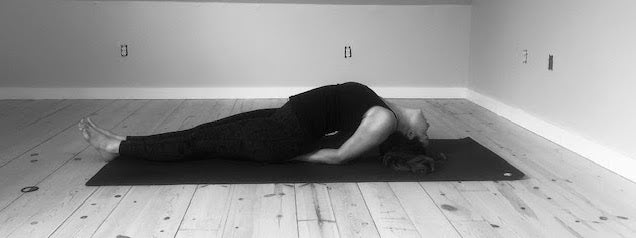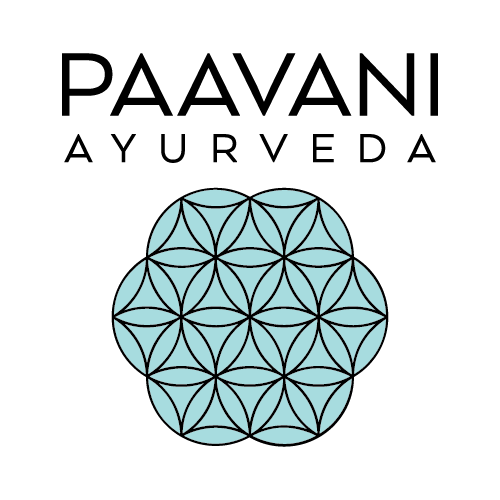
Matsyasana: An Ayurvedic Guide to Fish Pose

Matsyasana can be broken down into two words in Sanskrit. ‘Matsya’ means fish and ‘asana’ means posture; hence, this posture is commonly called by its English translation ‘Fish Pose’. The origin story of this posture begins with Lord Shiva, after spending ten thousand years meditating and receiving the wisdom of Yoga atop of Mount Kailash, descends down to mountain top to reunite with his beloved, Parvati. Parvati had anticipated Shiva’s arrival and had spread out a lunch by the riverside for them both to enjoy. As Parvati continued to organize lunch, Shiva excitedly explained the theory and practices of Yoga to his beloved. Matsya, a special fish who was a very good listener, was swimming downstream in the nearby river and heard Shiva talking. He was enamored by the ideas and wisdom Shiva was sharing and began to embody the essence of Yoga. By the end of Shiva’s discourse, Matsya was enlightened! This story marks the beginning of guru and student relationship.
Like Matsya on that historic and magical day, the posture, Matsyasana, brings expansion, awareness and harmonizing energy into our bodies, minds and spirits. Fish pose is a grounding yet expanding posture which invites us to open the throat and chest to release what is no longer serving us and invite in sattvic, or blissful, energy. This posture has many other benefits including:
Below are the effects of Matsyasana on the three doshas:
Vata- Fish pose is not our number one pick to balance vata dosha because it does invite a cooling and expanding energy into the body and mind; however, this does not mean that this Yoga posture is off the practice list for vata types! Although purifying, Matsyasana also has some restorative properties like alleviating backache, improving flexibility and suppleness of the spine and reducing constipation. To better balance vata dosha, we suggest the restorative variation of fish pose (photographed below). This variation provides a milder stretch and invites in a heavier, earthy energy versus traditional Fish Pose. If you do decide to practice traditional Fish Pose, hold the posture for a shorter period of time and stay focused on the grounding properties of the asana.

Pitta- Matsyasana is a backbend and all backbends help to release excess heat that can be stored in the solar plexus. Expanding and releasing through the solar plexus is one of the best actions to restore balance to pitta dosha, soothe the nervous system and bring a cooling energy into the body and mind. Pitta types can experience emotions like anger, jealousy and judgement more readily than other doshic types; therefore, opening the heart and inviting in feelings of empathy, compassion and understanding are important for pitta types. Fish Pose is an excellent way to open a fiery pitta’s heart as it opens the chest and makes the heart available to receive positive energy and release critical thoughts and emotions.
Kapha- A remarkable posture for balancing kapha dosha, Fish Pose is both purifying and energizing. It removes blockages to flow in the body and welcomes in fresh prana to revitalize and replenish heavy, dense and static kapha. To bring balance to kapha dosha, hold the posture for an extended period of time, taking full heart centered breaths in and out. You can also move into Fish Pose more than once to enhance its benefits.
How to Do Matsyasana:
Traditionally, Matsyasana follows Salamba Sarvangasana and Halsana and is followed by Paschimottanasana. This is a wonderful, balancing sequence we recommend for all doshas!
- Begin laying flat on your back on your Yoga mat.
- Shift over to the right side body and slide your left arm and hand behind the back, palm faces down.
- Shift over to the left side body and slide your right arm and hand behind the back, palm faces down.
- Return back to center, laying on your back, with your arms and hands behind the back.
- Begin to walk the elbows as close together as possible, this will start to lift your chest.
- Press about 90% of your body weight into your arms and hands and lift your head up and away from the floor.
- Place the crown of your head on the floor and still maintain 90% of your weight in the arms and hands in order to keep the head and neck safe.
- Take deep breaths into the heart center.
- When ready to release the posture, continue to press into the arms and hands and lift the crown of the head away from the floor and bring your gaze to your toes.
- Slowly roll your neck and head down, beginning from the bottom of the cervical spine and ending with grounding the back of your head.
- Once completely down, take several breaths in and out.
- Move the head gently side to side.
- Allow your body to rest for a moment, receiving the benefits of the pose.
Precautions:
Contraindications for Matsyasana:





Leave a comment
This site is protected by hCaptcha and the hCaptcha Privacy Policy and Terms of Service apply.